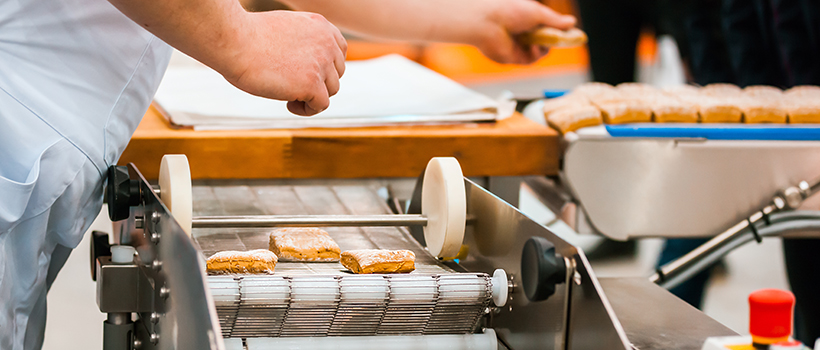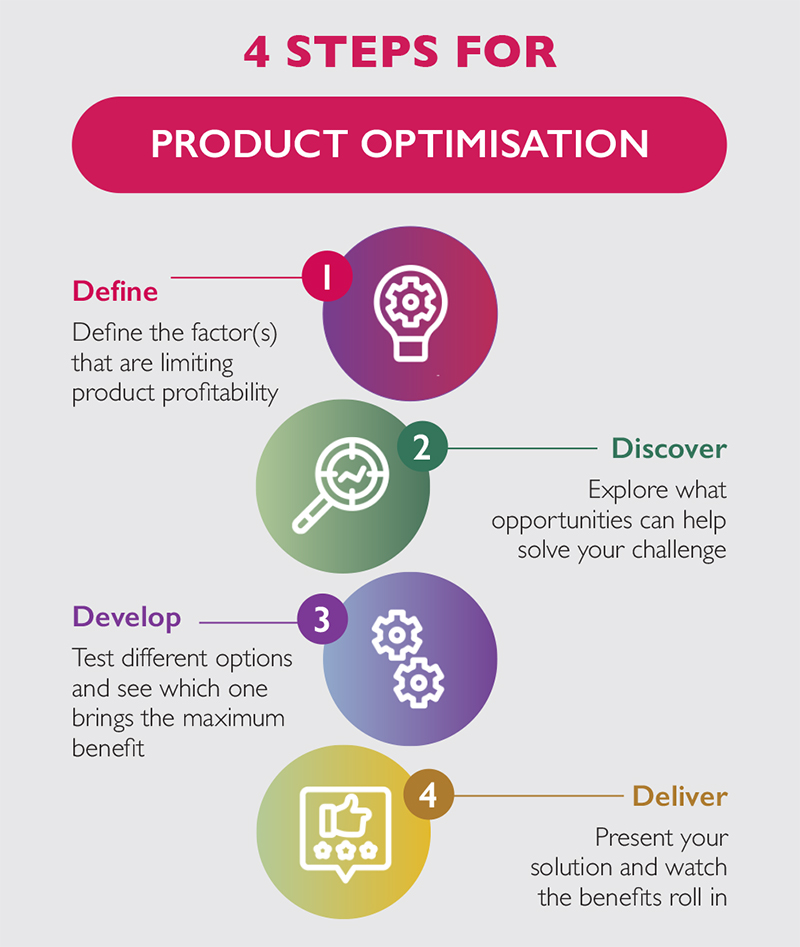
Minimise costs and maintain quality: 4 steps to successful reformulation
7 February 2023 | Birsen McArdle, Value Optimisation Lead
The food and beverage industry is growing at pace. But while market expansion offers attractive opportunities for manufacturers and suppliers, it gives competitors a chance to overtake and dominate. What’s more, food and drink companies face a plethora of challenges that are worsening by the day – from rampant inflation and cash-strapped consumers, to threatened supply chains and dynamic regulations.
Now more than ever, companies’ products must deliver superior value and quality at the lowest possible price to maximise profitability and keep the competition at bay. To achieve this, regular product cost optimisation – even for products that are performing well – is paramount.
Cost optimisation may sound complex, but it is an effective way to stay ahead. And, with the right approach, it can be straightforward and yield significant benefits. Here, we unpack the importance of product cost optimisation, sharing a simple 4-part road map that you can use to secure success.
Cost Optimisation: Keeping costs low, and quality high
Cost optimisation involves critically analysing the drivers of product costs and then pursuing sustainable measures to streamline them. A wide variety of approaches fall under the cost optimisation umbrella, from product reformulation to the modification of packaging or storage.
Whichever approach is used, product quality must be maintained to preserve its appeal to consumers. Reducing costs while also reducing value and quality defeats the point of cost optimisation, risking both revenue and your brand reputation.
Importantly, cost optimisation is just one – albeit powerful – aspect of product optimisation and is best employed after completing value optimisation.
For more on value optimisation and how value and cost must be considered together, download a FREE copy of our Product Optimisation eBook.

A framework to fuel success
Manufacturers can ease the path to cost optimisation by using a tried-and-tested framework that breaks the process down into four simple steps:

Applying the framework: Recipe reformulation
One of the most effective ways to cost optimise your food and beverage products is recipe reformulation; removing or switching ingredients in existing products to reduce costs, while keeping quality and taste attributes the same. Recipe reformulation doesn’t just reduce total product costs, though. It can mitigate the effects of supply issues and government legislation, offering several ways to protect revenues and ensure continued profitability for your products.
Below we show you what recipe reformulation looks like when using the product optimisation road map.
Step 1: Define
The first step of the product optimisation road map is setting a project brief, which will help you to articulate your end goal and set parameters for success. For product reformulation, your brief might be to meet a new target cost while maintaining a product’s flavour profile and texture, for example.
Step 2: Discover
To reach your new target, you’ll need a thorough understanding of the current product cost, and where opportunities for efficiencies may lie. Begin by assessing the purpose of each ingredient in your product and noting its cost and required quantity. Be sure to look at the most expensive ingredient (or the one with the largest cost per unit of output) first, as this will have the biggest impact.
Once you understand the purpose and cost of your ingredients, it’s time to explore cost-saving alternatives. These could be different ingredients, such as flavourings, or could even be the removal of an ingredient altogether.
Importantly, there’s a good chance that you already use a suitable cost-saving alternative ingredient somewhere else in your product portfolio. Spotting these opportunities can be difficult, though, as many industries have siloed teams working on independent projects.
Step 3: Develop
Now that you’re armed with several new recipes, it’s time to design and develop new prototype products to identify the most promising option. It goes without saying that these products must be created in line with the initial brief – they should reduce total product costs while strictly maintaining the product’s appeal to consumers. To ensure you’re meeting the brief, deploying quantitative and qualitative testing is critical at this stage.
Step 4: Deliver
Follow the above three steps and you should have a reformulated, market-ready product that can provide considerable cost savings without compromising customer requirements.
Many companies have already achieved noteworthy success with this road map. For example, using the same optimisation framework, we helped a well-known bread manufacturer to reduce the fat content of their gluten-free bread as well as to reduce its production costs by 20% — all through the power of recipe reformulation!
If you found this 4-step framework helpful, download a FREE copy of our Product Optimisation eBook for more useful infographics covering the interconnecting strategies of value optimisation and cost optimisation, and how to apply them unlock the full potential of your products.
Proactivity breeds profitability
In today’s market, competition is fierce, and many challenges litter the road to profitable operations. Staying viable and at the forefront of the industry means regularly and proactively optimising your products. Cost optimisation is one of the most effective ways to curtail costs, maintain quality, and protect your profits. And, with a robust road map to guide you through the process, you can more easily unlock its benefits.
How can we help you?
If you’d like to discuss opportunities to optimise your products, contact our support team today.
Download our FREE eBook today
To explore the different strategies that you can undertake to maximise your product revenue and profitability without compromising quality, download our eBook today.







